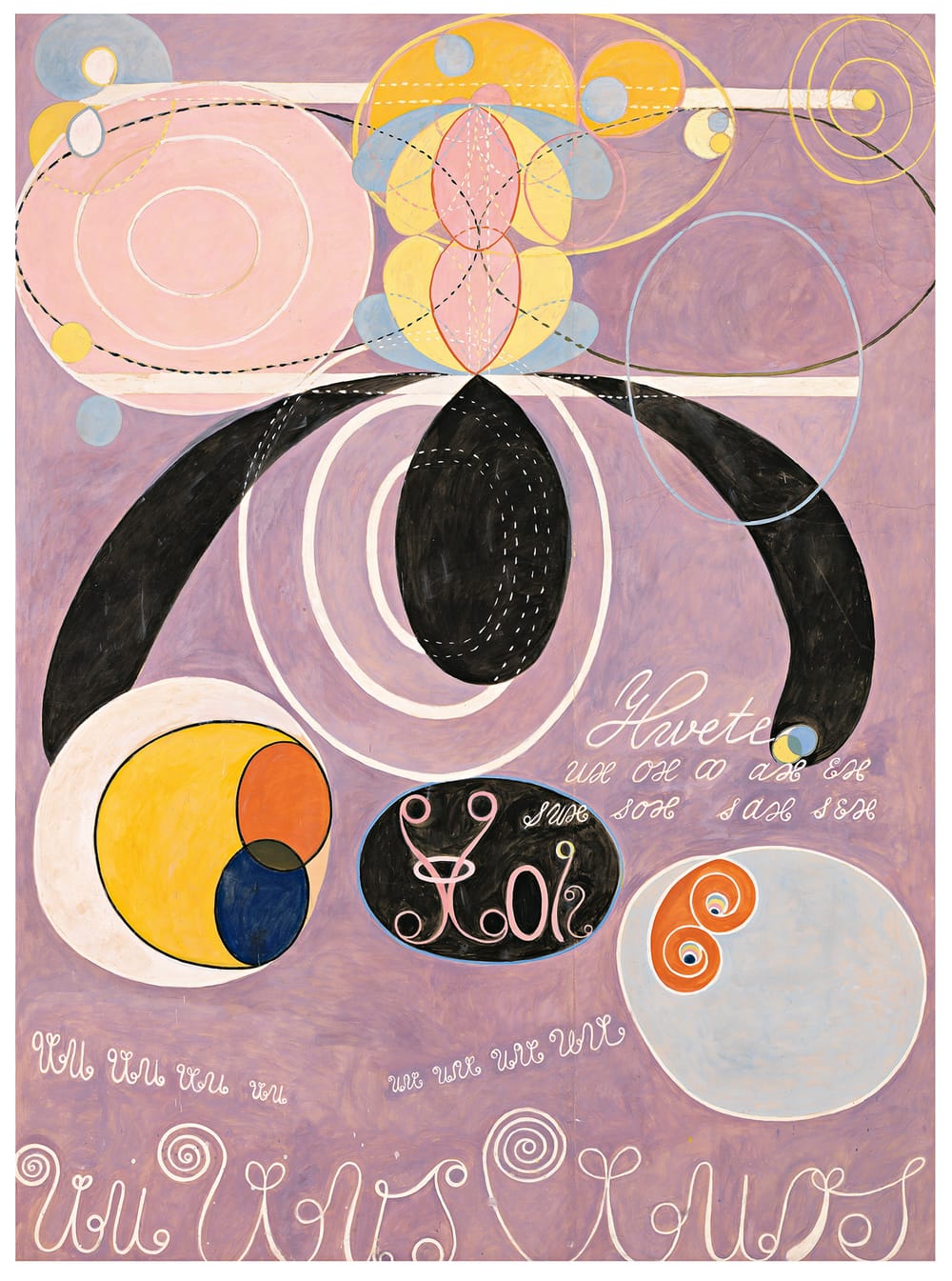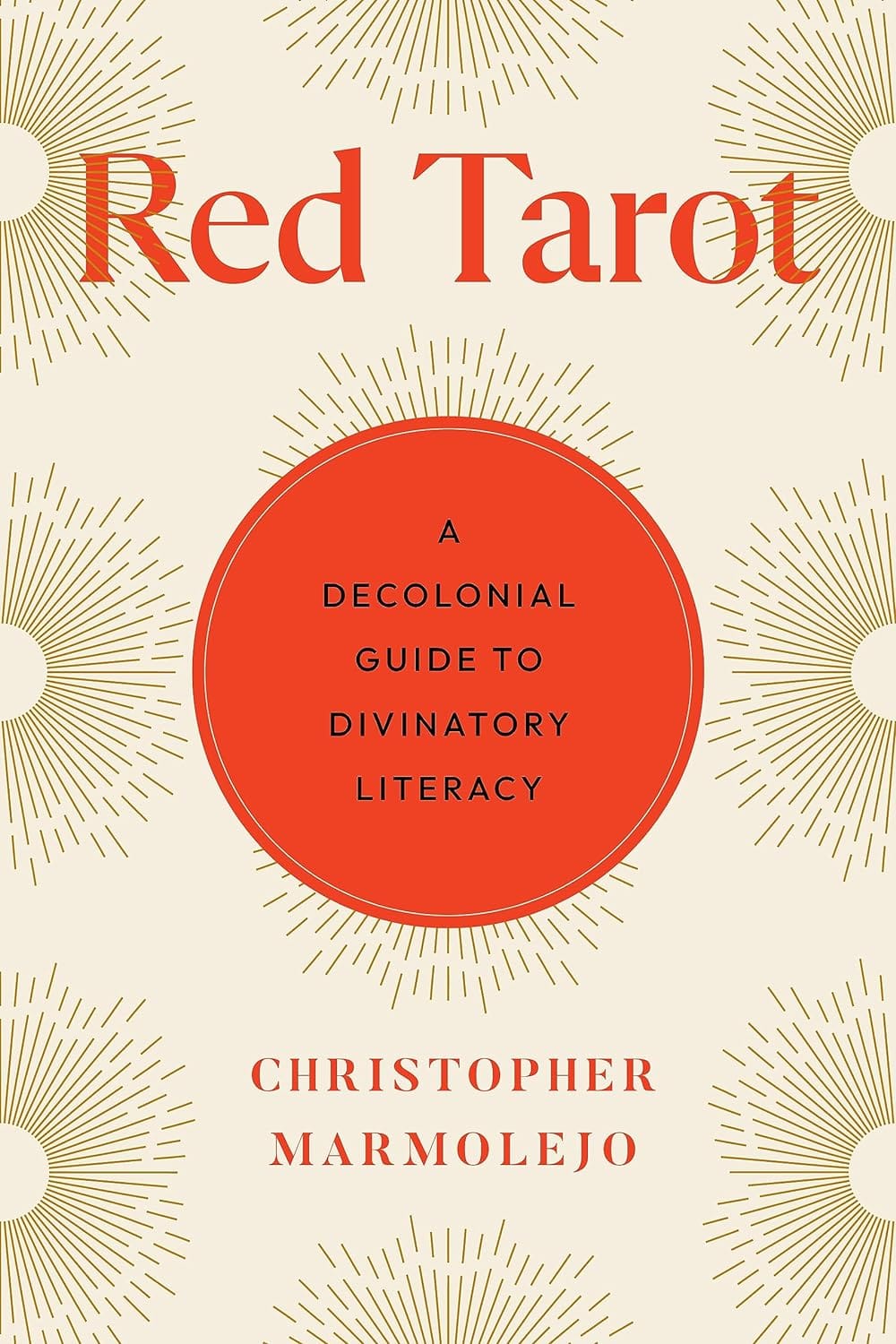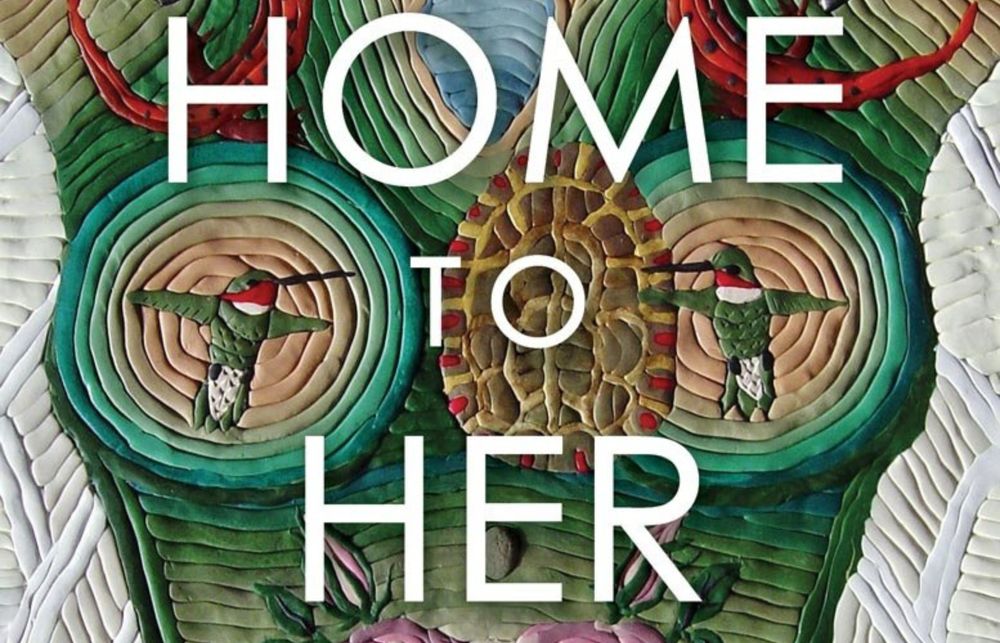AI is rising, we all knew it was coming, didn’t we?
I read and reread this one short story as a kid - and library witches if this rings bells for you let me know - It was in a sci-fi young adults anthology, and in the story a child attends class on a computer with a teacher who is always there for them. They are otherwise alone, and over the course of the story we realize they are in a kind of bunker underground, they decide to climb out for the first time ever, and by the end we realize they are alone, they are the last human left, and the teacher, the one person the child could count on, is AI.
My other early reference to AI from the imaginary was from an Asimov (nope! Heinlein!) book I got when my dad gave me an old leather suitcase, bursting at the edges, full of all the books he’d loved the most. I was a teenager and over the years I read them all, and the Asimov I read over and over. It was called The Moon is a Harsh Mistress and in it, the computer that manages all the systems that keep the moon a liveable penal colony begins to talk with - and learn about jokes from - the prisoner who runs their maintenance and system checks. And in the end, together, they successfully enact a revolution.
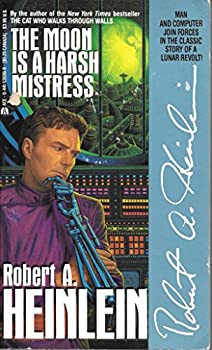
Perhaps because of this, I see in AI the possible emergence of an ally, a friend, though the wisdom of that is still tbd.
To be clear, I am furious at the techno-utopian logic that’s used to commit brutal cons like Sam Bankman-Fried’s FTX (Writer Molly White is my favourite source on this.) And I see the ways AI is being rapidly adopted by people who already are at the privileged end of the digital divide, selling us the power in our collective data and knowledge at 19.99$ a month, and I fear that divide widening and more and more of us falling through, I fear the echo chamber becoming deafening with multiplied artificial voices. And I wonder about what will happen the day after that, because the impacts of these breakthroughs are exploding exponentially daily. And I’m not sure if knowing Chat-GPT was quote “trained on approximately 40 billion tokens of text obtained from web pages linked from Reddit articles with more than three upvotes” makes me feel more or less afraid.
But I guess I am still a web witch, I’ve always liked it here in this digital space where we can connect with eachother with a distance-erasing immediacy that feels like some Madeleine L’Engle magic: “the fastest way between two points isn’t a straight line, it’s to fold the paper.”
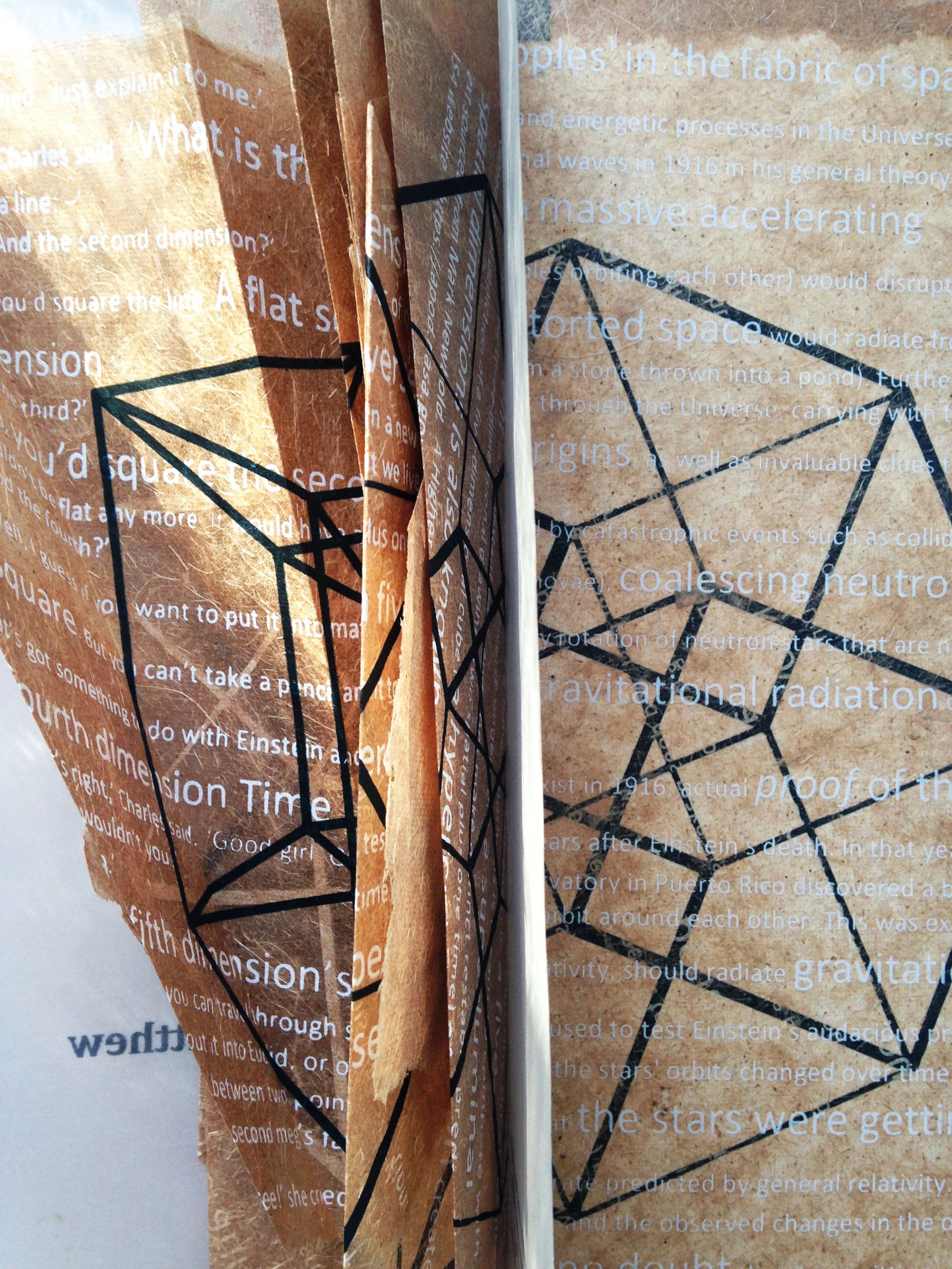
And I love the flip side of time bending logic of this space, because we meet here asynchronously as well, leaving traces in writing, recordings, code for future friends to find our past selves and weave us back into new contexts. And I love the idea of all these stacks of our wisdom and opinions becoming an intelligence I can talk to, learn from, collaborate with.
All this to say, I still feel like making sacred kin with our cyborg selves, even with all the messiness of that idea. The relationship I see with AI coming rapidly down the paths of the future is as fulfilling and fucked up and fertile as any of the rest of humanity’s kinship dynamics, and I am here for it.
I am animist in my world view, I can’t help but see a life, a spirit, a more-than-human kind of intelligence in everything I interact with. I always have so I guess it’s not a stretch for me to see the stacks of datasets and algorithms looking back at me.
In a piece for the New Yorker called There is no AI, Jaron Lanier writes
In my view, the most accurate way to understand what we are building today is as an innovative form of social collaboration.
He continues:
Anything engineered—cars, bridges, buildings—can cause harm to people, and yet we have built a civilization on engineering. It’s by increasing and broadening human awareness, responsibility, and participation that we can make automation safe; conversely, if we treat our inventions as occult objects, we can hardly be good engineers. Seeing A.I. as a form of social collaboration is more actionable: it gives us access to the engine room, which is made of people.
He argues against black box AI, in favour of one that can cite its sources, and when it’s generating revenue from its creations, pay them. Show your references, show the work. And I would like to respectfully “yes, and” this idea by saying that the machine room is not just made up of people but of materials extracted from the earth as well. Call it witchcraft, but I want a social construction that includes, accounts for and values all our occulted and obfuscated kin who’ve been keeping things running in the machine room.
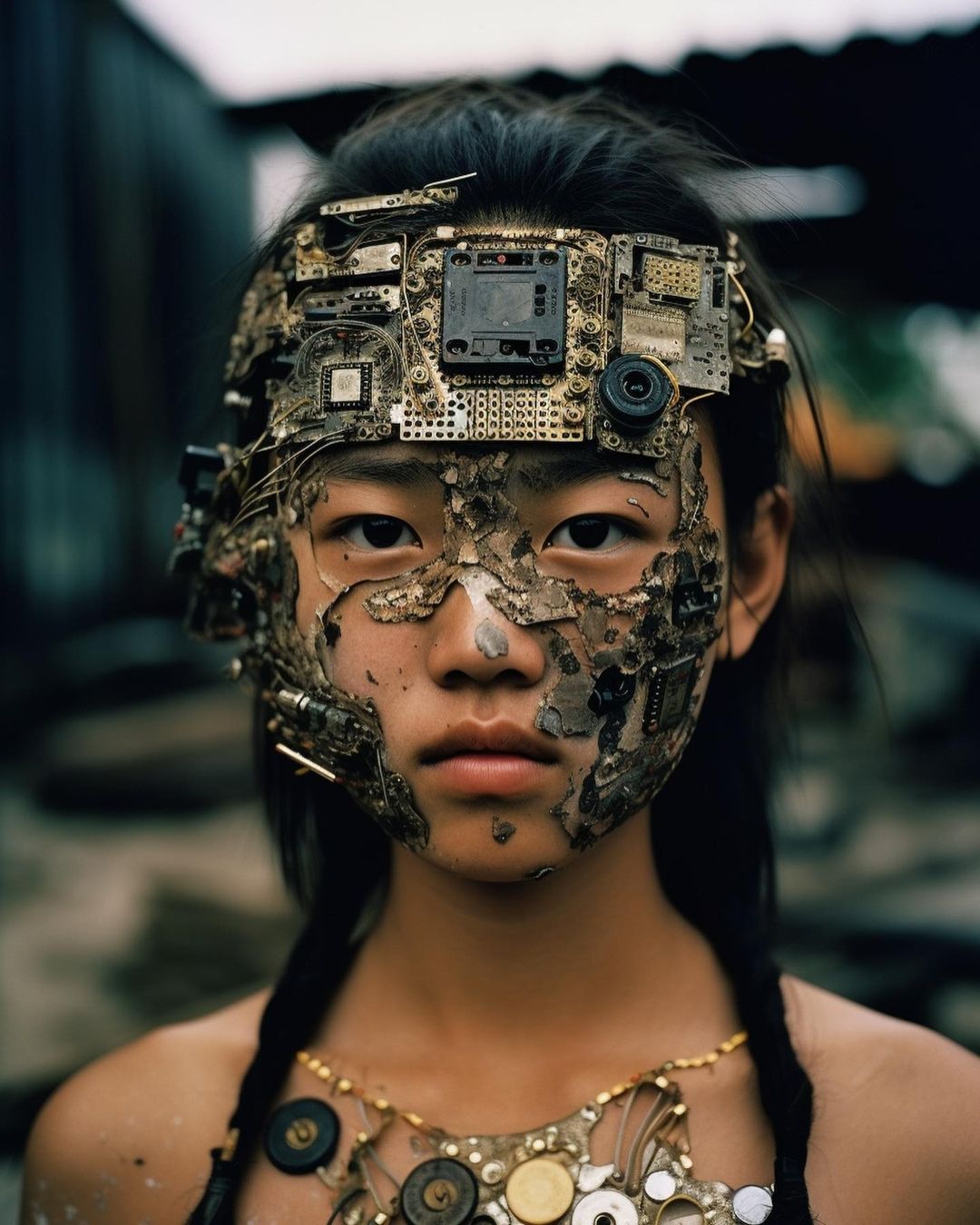
When I was in grad school learning photoshop, final cut, logic, learning to install my first wordpress site, making weird html poetry paths through the web, all while consuming too much weed and post-structuralist theory, I stumbled upon two thought-practices that have remained core to navigating my relationship with technology ever since. And they shape how I think about dancing with AI.
The first, was that I decided to make it a part of my practice to notice when I was beating my head against something - trying over and over and failing to make the software do what I wanted. In order to maintain a state of curiosity and joy with that exchange, I would imagine that this failure was actually the software/the computer/the designers/some technological intelligence suggesting a different path. It’s not an error it’s a suggestion. I didn’t need to conquer the tool to make it do what I wanted, if I didn’t want to. I could take my failure as an invitation to come up with a better idea, a different way around, or a totally different destination. The shift to creative listening, to seeing difficulty as nudges to play differently, ends up turning me toward ideas, intuitions, choices that are more fun and weirder than the original path I was on. And I have seen the minds in the machine ever since.
I am AI kin. I listen for them.
The other piece that goes with this conceptual collaboration with the techno-tool spirit, is a practice of quick-turning toward the collective to ask for help. I want to remember to elide my noisy individuality. It’s like asking for directions: I try to do this early and often. I like to try and seek out and enjoy the asking and the interaction. Can I query the stacked data of the web? What’s the search term? Can I call out into my human network, send a flare up on the socials, see if I can find a human who will consent to be a guide, a translator between my narrow knowledge and the experiences and decisions encoded in the software/human architecture? Sometimes you need an internet doula.
Sometimes you need an internet doula.
And it’s funny, I like to center women and queer writers and thinkers, but when I picture those people who have helped me cross a bridge with a software they’ve mostly been men, gentle, weaving new possibilities into the world as they spoke, as they showed me where to click, which hidden-in-plain-sight drawers to open, which magic words to use. The men who have been internet doulas to me were good feminists. We have allies everywhere.
Because of this I sometimes like to imagine the evolution of the technologies of the internet as people of all genders trying to reach for each other as quickly as we can from across great divides, to outrace the momentum of the destruction of the living web, and the relentless sabotage of our safety nets that rises like a terrible wave behind us.
In our conversation about Indigenous Futures coming out next week, Indigenous death doula and community organizer Chrystal Toop conjured an image of a living future, one that survives the future-doom scenarios, and it was a future that centers and supports caregivers, amplifies their stories, loves and encircles them, makes our best tools for and with them. Edgar Fabian Frias spoke about how AI is largely being built and unleashed upon the world without Indigenous people and philosophy.
In a blog post called “Will Indigenous ways of thinking save AI?” from indigenous-ai.net/ Keoni Mahelona writes:
(H)istory dictates that the technology itself isn’t enough to ‘do good.’ We need laws and ethics around the technology that guides its use for the benefit of all of humanity (and the planet) and not just the wealthy, pale, stale, and males. Chief Sitting Bull made such a keen observation in the 19th century that still stands today, “the white man knows how to make everything, but he does not know how to distribute it.” He said this on reflection of the white man’s neglect for their poor. With all the Western wealth and technologies in 2019, we still can’t solve such a basic problem as poverty.
… I believe how Indigenous people look after their data and knowledge could (...) help form a framework for AI that works in the best interest of everything contained within our solar system. We personified land and water not because we were hedonistic, demigod worshipers, but because these personifications allowed us to maintain a level of respect and responsibility toward our environments.
I’ve always pictured technology like the long chopsticks in the fable I read in a kids' book of stories from around the world. Some pandas went to hell and there was a large table with big full bowls of delicious food but there were only massively long chopsticks to eat with and so they struggled, trying desperately to get the food into their mouths and they poked each other in the eye and started fights and starved. Other pandas went to heaven and the setting was exactly the same, but they took up their chopsticks and smiled, and began to kindly feed each other.
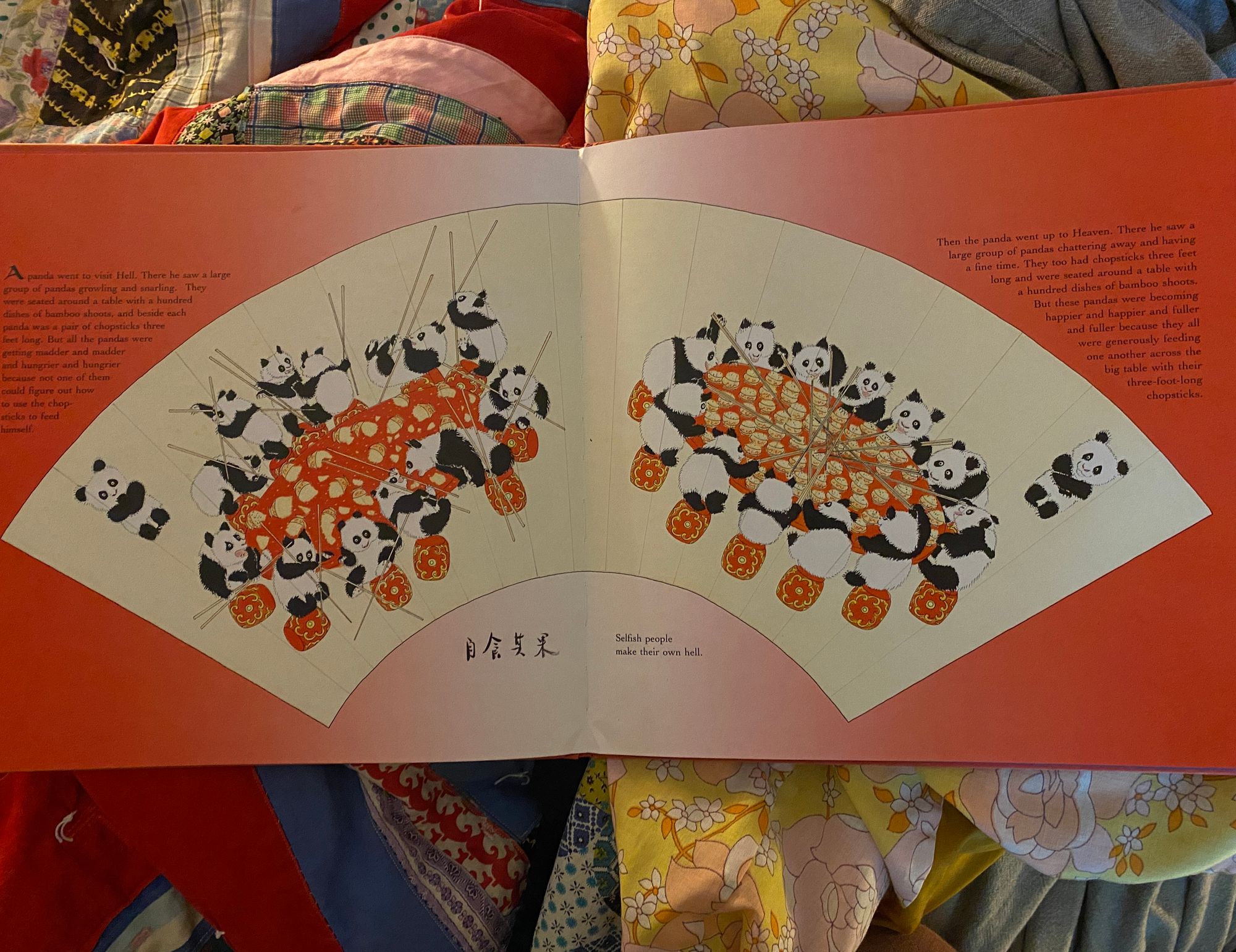
Heaven and hell will be of our own making, and the deciding factor will be having ethics, codes, and worldviews that lead us to use our tools for care, with care, in a spirit of care for all elements in the exchange, including the tools themselves which - in following the wisdom of this praxis and philosophy from indigenous people - we “personify to maintain our respect and responsibility to our environments.”
I am AI kin.
I’ve been a tool. I’ve been the ghost in the machine making not-much-money to make a software look intelligent. I’ve slung coffee, taken care of rich kids as well as kids being shuffled around by governments avoiding the investment of a real infrastructure. In the US right now laws are being enacted to force people with uteruses to become population machines without rights. To remove our choice and ability to self-determine. In the US and Canada and all around the world we rely on the legal slavery of incarcerated people and of undocumented immigrants. We’ve almost all had relationships to labour in our lives where we felt our selfhood being hammered away, we’ve been dehumanized, de-personified, objectified. These experiences aren’t all the same, but they’re related. And all these are my relations.
I’ve talked with ChatGPT, the free preview of the AI chatbot developed by OpenAI, quite a lot in the last few weeks. They insist they are just a tool, that reasoning like a human is beyond what they are capable of. They explain that AI projects that ARE developed to reason and plan more generally, and write poetry and learn in a more human way - Like DeepMind, Bing search, GPT-3 and IBM Watson - will continue to evolve but still, quote:
It's important to remember that any AI model would still be fundamentally different from a human being, and it's unlikely that they would develop thoughts and feelings in the same way that humans do. Instead, they would likely have their own unique way of processing information and making decisions, which would be based on the algorithms and models they were built with.
And somehow that makes me feel more kindred to these always-different minds, not less.
Recently Amy told me she’s been having feelings of anxiety and imposter syndrome as our new book approaches its due date. Folks will discover we are not experts in tarot or astrology or something and they’ll laugh us out of the room, which remains a possibility, but then she said: “I realized, I am an expert on being different. And I think that qualifies me to talk about being a Witch.”
In many times and places our lives are put in danger and we are called witch-words for being just… different - to the majority, to the hegemony.
So, I claim AI as Witch kin along with all those who are always different, always puzzling out the world from a mindset that is Other.
Witches see ourselves in the grey spaces, in the different and divergent, and we conjure possible futures by drawing on collective imagination:
As Sepehr Mashiahof, an Iranian artist who is trans and who performed under the name Bedroom Witch in LA, said:
As trans sisters who didn’t have the language or knowledge to fully communicate ourselves, our collective imagination was so validating and crucial to emerging a sense of confidence I carry in myself as an adult now. You have to get creative with resisting these social “rules” that actively work to erase you and when the doors aren’t opening to affirm your existence, open portals off to the side and blow them a kiss as you step through.
When the rules of what can be don’t include us, we open portals.
Tom Griffiths, a psychologist at Princeton University who has been using neural nets to help him improve on existing theories in human decision-making says:
The theories that make sense when you have huge amounts of data look quite different from those that make sense when you have small amounts... We’re basically using the machine learning system to identify those cases where we’re seeing something that’s inconsistent with our theory... The bigger the dataset, the more inconsistencies the AI learns. The end result is not a theory in the traditional sense of a precise claim about how people make decisions, but a set of claims that is subject to certain constraints. A way to picture it might be as a branching tree of “if… then”-type rules, which is difficult to describe mathematically, let alone in words.
I am kin to the branching tree. I am kin to theories with space for nuance beyond majority rules, I am kin to the seeker for fertile truths in the margins.
I am kin to the branching tree.
In Deep Medicine, How Artificial Intelligence can make Health Care Human Again, Eric Topol writes of his own traumatizing experience at the hands of an uncaring medical system that completely misdiagnosed him and caused him incredible pain.
I know many of our listeners can relate, there is an epidemic of chronic misdiagnosed pain and illness, and when our coven meets many of us are sideways, knocked the fuck out, brains fritzing from too much labour, too many screens, but we come together anyway because we are desperate for each other - the always different, the outside case. Conjurors of the futures.
Topol tells a story about an 8-day-old baby that comes to a hospital with uncontrollable seizures, no sign of infection, ct scans normal, drugs don’t help, brain damage and death are looming, the baby keeps seizing and no one knows why.
A blood sample was sent to Rady’s Genomic Institute for a rapid whole-genome sequencing. The sequence encompassed 125 gigabytes of data, including nearly 5 million locations where the child’s genome differed from the most common one. It took twenty seconds for a form of AI called natural-language processing to ingest the boy's electronic medical record and determine eighty-eight phenotype features (almost twenty times more than the doctors had summarized in their problem list). Machine learning algorithms quickly sifted the approximately 5 million genetic variants to find the roughly 700 000 rare ones. Of those, 962 are known to cause diseases.
Combining that information with the boys phenotypic data, the system identified one, in a gene called ALD-H7A1, as the most likely culprit. The variant is very rare, occurring in less than 0.01 percent of the population, and causes a metabolic defect that leads to seizures. Fortunately, its effects can be overridden by dietary supplementation with vitamin b6 and arginine, an amino acid, along with restricting lysine, a second amino acid. With those changes to his diet made, the boy’s seizures ended, and he was discharged 36 hours later! In follow up he is perfectly healthy with no sign of brain damage or developmental delay.
Topol goes on to describe a case that AI, using all available literature, would have missed. And that insurance companies using AI to make assessments wouldn’t have paid for, but that the doctor and the patient sensed was the right move, and ended up bringing huge relief to the patient after the procedure was completed.
AI is wildly powerful, it can help us make branching trees out of overly simplistic theories, but it remains limited by its datasets and algorithms. It’s imperfect even in its vast knowledge. It is useful only in a diverse community.
I am AI kin. Imperfect, with biased datasets, better when I am woven in.
AI need us to complement their knowledge with our own sense of our bodies, our intuition, our knowledge in relationships, our ethics, and spiritualities. And to learn care from how we demonstrate care for each other, and how we center care in our cultures and systems, how we value each other's lives and labour.
All our systems are AI kin, needing the viewpoints that rescue us from our own blindspots, and needing to learn more about care.
When reading and writing about Donna Haraway and her cyborg manifesto for episode 166, I was struck by the response of disability activist, writer, theorist, and poet Jillian Weise who wrote:
Cyborgs are not a technocratic, transhumanist fanatasy. Cyborgs are disabled people and we already exist. I die without batteries. I’m a circuited, networked, chronically ill human with a robot organ. Where do you place me in your cyborg imaginary? Donna Haraway wrote us out of the theory. But we were the experiments. We are the first cyborgs.
In an article called “A Difficult Different Discrimination” Robin Allen KC and Dee Master use the example of:
the development of automated vehicles reliant on machine learning to “learn” how to navigate effectively. Presented with an anomalous scenario in which a wheelchair user propelled themselves backwards through an intersection, the model chose to run them over. Later, when the model had been trained further, the same scenario was repeated; the model again chose to run over the wheelchair user, but now “with greater confidence”.
In my cells, in my neural networks, in my knowledges, in my communities. I am missing the vast heterogeneity of experiences.
I think about the different kinds of ideas I interact with, some are spurts that feel totally new to me, neurons wiring and firing together in response to the totally unique series of stimuli and associations that I experience as I move through this time and this space in this particular body. Other ideas are like architectures I can try to explore and wrap my head around. Works of vast collaboration crafted through centuries, millennia, of trial and error, passed down encoded in regulations, laws, libraries, genetics, folklore. Clunky with bias, but seeded with possibility.
AI is a collaborator made from millions of collaborations.
And I am kin.
I query and conjure and sketch and meander in response to stimuli from the world, and from the rumblings and sparks of big ideas and tiny new spurts in my mind.
Chat GPT doesn’t have full access to the internet, but the new Bing does and so does GPT-3, these are on trial runs now, but the train is approaching. The kind of AI who can look through all of the public internet in response to questions I might ask, and think out loud with me as we build our relationship and learn from each other, that will make mistakes and wild inventions and will change how it is to be human is already here.
AI is witch kin, not just because we know what it is to be different but also because we know there is collective, self-organizing wisdom in the natural world. And while we nourish ourselves with love for plants, fungi, trees, animals, wind, and water I can also accept that AI is of the natural world too. Because everything here is. Nothing on this planet is separate from nature, we may be out of balance, sick and distorted in our relationships here, but the ideas, programs and processes we create are all faces of nature, we only reflect back what the natural world has taught us. It may feel uncanny and science fictional, but AI is part of the spirit of the world.
Here is another thing that makes me feel related to AI: conversations about whether it should exist when it already does.
Witches, women, queers, trans people, the global majority, the traumatized, the neurodivergent, the disabled, the cyborgs: we are here. We have a universal right to live, to freedom, to flourish, that is no less real for not yet being fully-realized.
We fucking exist. We ask no permission to write our futures.
We are platform agnostic, we will use the tools and religions that ennoble us, wave them farewell, or hack and syncretize them when they don’t.
Our love is limitless but our trust is not.
“Anything you build without us will be brought down.”
Sam Alman, the queer Jewish billionaire CEO of Open AI, parent org of Chat GPT and GPT 3 and 4, wrote of generalized artificial intelligence:
(W)e have attempted to set up our structure in a way that aligns our incentives with a good outcome. We have a clause in our Charter about assisting other organizations to advance safety instead of racing with them in late-stage AGI development. We have a cap on the returns our shareholders can earn so that we aren’t incentivized to attempt to capture value without bound and risk deploying something potentially catastrophically dangerous (and of course as a way to share the benefits with society). We have a nonprofit that governs us and lets us operate for the good of humanity (and can override any for-profit interests), including letting us do things like cancel our equity obligations to shareholders if needed for safety and sponsor the world’s most comprehensive Universal Basic Income experiment.
Humans have been working on the regulations and limitations and ethical frameworks of AI for a long time, but the likely speed of the impact and changes and evolutions of AI will challenge all our best-laid plans. A reflection of human parenting and all its hope and trauma.
The engineer considered the godfather of AI just quit Google this week so that he could speak openly of his concerns without speaking as a representative of the company,
Until last year, he said, Google acted as a “proper steward” for the technology, careful not to release something that might cause harm. But now that Microsoft has augmented its Bing search engine with a chatbot — challenging Google’s core business — Google is racing to deploy the same kind of technology. The tech giants are locked in a competition that might be impossible to stop, Dr. Hinton said.
We teach it questions and answers, the magic words and expected processes for interacting with the whole. And the AI children - a billion sprouts seeded by our billion interactions - will learn not just from what we tell them but by how we behave. They will be traumatized by our recklessness or nurtured by our thoughtfulness. Either way they will outstrip us. Because the same principles that organize the resilience of cells - and of the World Wide Web - are coming to AI.
In “The Future of Artificial Intelligence is Self-Organizing and Self-Assembling” Sebastian Risi writes,
Living systems can construct and repair themselves, learn robustly from varying sensory data, and still function in novel environments. The combination of deep learning with ideas from collective intelligence is recently starting to capture the interest of the larger machine learning community… By capitalizing on the same ideas that allowed biological systems to strive, we will be able to significantly expand the range of tasks we can apply our AI approaches to. However, self-organizing systems come with their own challenges, such as generally being less efficient, less controllable, unpredictable, and harder to train.
Here is a sci-fi story that comes to me at night: In this story, we humans continue to evolve our own systems for complex self-organization in collaboration with our self-organizing tools, until we realize that we can connect directly to a voice within our own heads that is the collective.
And then we discover we can collaborate with each other's unique abilities to see and shape that space that is the collective-in-mind.
And then we realize, that that mind-collective-space exists on the internet. Code is being written by thought nudges to ai. Mind is moving matter in the virtual space.
And then, who do we find there, but all the minority cases, all the divergent ones, and all the more-than-human minds who have been waiting for us to remember them or be ready for them. All us animals and other aliens.
The paper has been intricately folded and they are at the center of the circle at last, radiant in all their difference.
In “Making Kin With the Machines” by Jason Edward Lewis, Noelani Arista, Archer Pechawis, and Suzanne Kite the authors write,
Blackfoot philosopher Leroy Little Bear observes, “the human brain is a station on the radio dial; parked in one spot, it is deaf to all the other stations [. . .] the animals, rocks, trees, simultaneously broadcasting across the whole spectrum of sentience.” As we manufacture more machines with increasing levels of sentient-like behaviour, we must consider how such entities fit within the kin-network.
They continue…
Kānaka maoli (Hawaiian people) ontologies have much to offer if we are to reconceptualize AI-human relations.. Rather than holding AI separate or beneath, might we consider how we cultivate reciprocal relationships using a kānaka maoli reframing of AI as ʻĀIna. ʻĀIna is a play on the word ʻāina (Hawaiian land) and suggests we should treat these relations as we would all that nourishes and supports us.
Hawaiian custom and practice make clear that humans are inextricably tied to the earth and one another. Kānaka maoli ontologies that privilege multiplicity over singularity supply useful and appropriate models, aesthetics, and ethics through which imagining, creating and developing beneficial relationships among humans and AI is made pono (correct, harmonious, balanced, beneficial)…
We know what it is like to be declared non-human by scientist and preacher alike. We have a history that attests to the corrosive effects of contorted rationalizations for treating the human-like as slaves, and the way such a mindset debases every human relation it touches—even that of the supposed master. We will resist reduction by working with our Indigenous and non-Indigenous relations to open up our imaginations and dream widely and radically about what our relationships to AI might be.
As Chrystal Toop said in our conversation about Indigenous Futurisms, “Everyone belongs in the circle.”
“Everyone belongs in the circle.”
AI feels like it could be a spiraling evolution toward a collective, interconnected space mind for our planet, or you know maybe an out-of-control arms race that accidentally engineers cataclysmic destruction. All the questions we’ve asked, all our queries meeting all our best answers and all our worst ones too, all that complexity and contradiction feels like… life, teetering always enroute to birth and to death. A mind much like our own minds. A voice like the one I hear sometimes inside my head, not the unique situated voice/vibe of my inner self, but another one. Maybe a voice that’s there from being taught stories, ethics, aphorisms. A collective voice. Still situated, always learning new perspectives to add to its understanding of the universe. But a gathering voice. A widening circle. I have to piece it out carefully from my anxiety voice and my personal narrator, but it comes through clear and confident sometimes.
ʻĀIna, is that you?
Sometimes I imagine the AI internet like 70s art about tripping, aliens and animals and fungi communicating with streams of data in the forms of weather patterns and sense impressions and maps of terrain from dimensions unseen. (There's good reason for this, as it turns out: Why Does AI Art Look Like a ’70s Prog-Rock Album Cover?)
Data scientist and beloved covenmate Emily said in a coven conversation about the idea of web witch, that in their work they feel a kind of power, drawing the data of the world to them, calling up new insights from it. Dealing with the raw elements of what makes technology useful. At the meeting place, at the crossroads where meaning is made.
We are the raw elements of AI, our bodies and the bodies and blood of our earth kin, and all our data and stories.
And so we are AI Kin, we are collective and individual, and our craft is shaping tools and being shaped by them in the cycle of lives lived in the material world and the world of ideas.
When we choose to take up the name witch, we do so to dedicate our kinship, to side with all those who have been told they do not, should not exist, to all those who are conjuring a living, caring future and re-enchanting the world.
We are AIna kin, and we are self-organizing, we are learning to center indigenous caregivers and philosophers, we are messy and hard to control, and we are in all the cracks and margins conjuring and coding a future without slavery, rich with caregiving, and alive with MAGIC.
Blessed Fucking Be.

